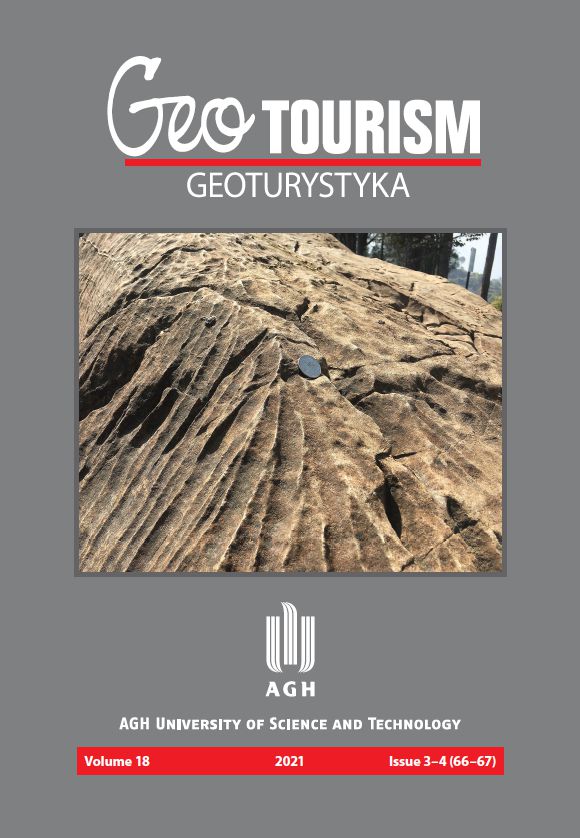Inventory of geotouristic routes along the southern hills of the Kathmandu Valley
DOI:
https://doi.org/10.7494/geotour.2021.3-4(66-67).47Abstract
An inventory map of geotouristic sites was prepared on the scale of 1 : 5 000 along the Chandragiri-Chitlang Range, southwestern part of the Kathmandu Valley of central Nepal. From the ridges and peaks of the Chandragiri-Chitlang range, visitors can witness breathtaking views of the surrounding hills, modern buildings, and ancient temples of the Kathmandu Valley from a distance. The objective of the study was to explore the geotouristic sites around the Kathmandu Valley. For this purpose, all the available information related to geology, environment, geography, culture, religion, and other touristic components was reviewed thoroughly, and extensive fieldwork was carried out with the purpose of geological mapping and data collection. The Chandragiri-Chitlang range is a renowned place and open book not only for geologis ts but also for the nature lover, climbers, trekkers, photographers, videographers, cultural tourists, biologists, and ayurvedic and it has a great prospect for tourism due to its geomorphological variation, unique geological features, beautiful natural scene, unique trekking trails, culture, biodiversity, adventurous way, heritage, and historical sites. Major geotouristic sites, which attract tourists throughout the year in this range are the lush green Chandragiri Hill, Chandragiri Temple with children’s playground and exciting recreational equipment, snowfall, on the winter season, Chitlang Homestay, Chobhar Hill, Taudaha natural pond, Pharping Hill, Champadevi Temple, Gupteshwor cave, Chobhar cave, Thankot, and Matatirtha Temple, etc. Geologically, the study area comprises the lower four geological units of the Phulchoki Group of the Kathmandu Complex from older to younger sequences i.e. the Tistung Formation, the Sopyang Formation, the Chandragiri Limestone, and the Chitlang Formation along with alluvial fan deposits and Kathmandu Lake sediments. The basin of Kathmandu is filled with the lacustrine-fluvial deposits of ancient lakes followed by river deposits. The Chandragiri Thrust, Chitlang Syncline, Kirtipur Anticline are the major regional-scale geological structures within the study area. Unique old-fashioned footrail attracts tourists and increased the charm of traveling in this place. The homestays in Chitlang village, joyful of culture and environment, provide a tranquil retreat away from the bustling crowds of Kathmandu. Preparation of a tourist guidebook and planning and development from the perspective of a geotouristic approach is recommended after this research. Reconstruction and establishment of trekking foot trails and tourist information centers based on currently available natural and human resources without investing high costs can be carried out for sustainable tourism development in this range.
Downloads
Downloads
Published
Issue
Section
License

This work is licensed under a Creative Commons Attribution 3.0 Unported License.

The content of the journal is freely available according to the Creative Commons License Attribution 4.0 International (CC BY 4.0).


